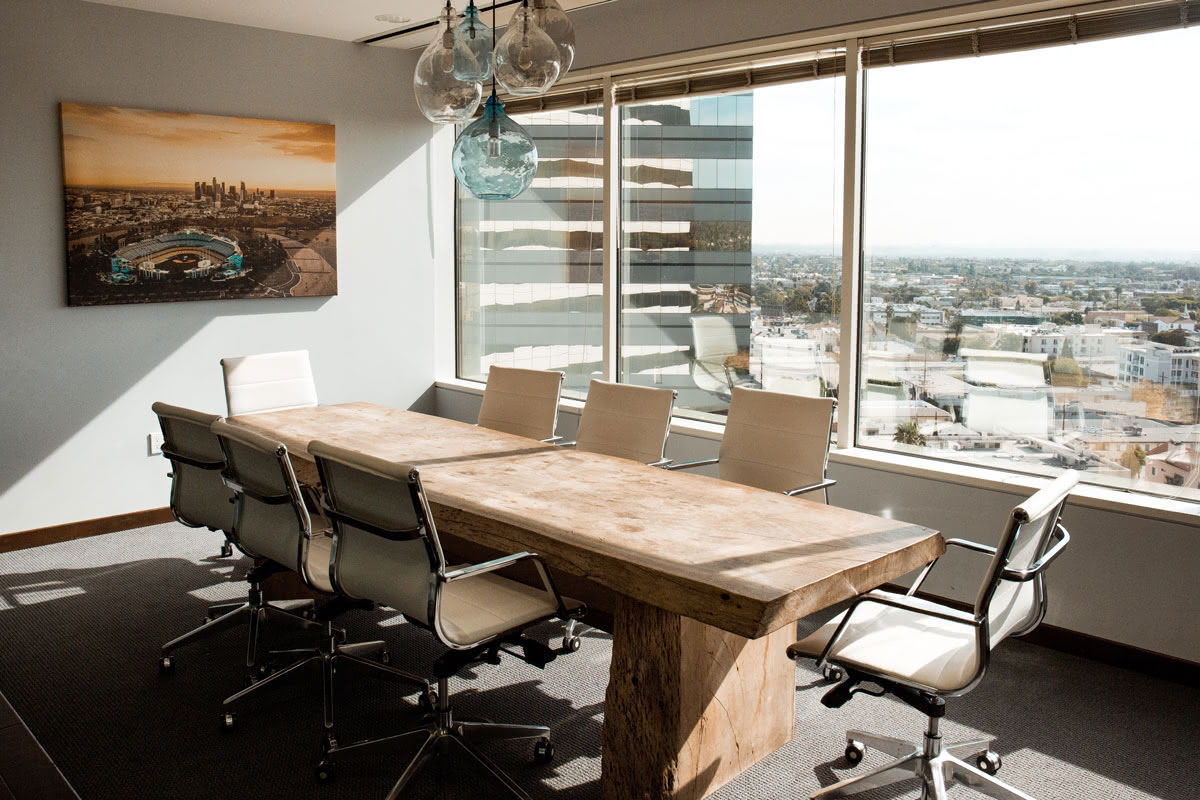How to Create a Flexible Office Space in 5 Easy Steps

If you've visited an office post-pandemic, you've probably noticed that the modern workplace has gone through some transformations. Today, the demand for flexible office spaces is on the rise and will continue to be a factor in attracting and retaining talented employees. Workers are looking for coworking spaces that support their well-being and have the right technology to help them be more efficient.
According to a recent study, 77% of employees think that flexible and remote work options are vital for productivity. It goes on to say that “incorporating these workplace preferences has transitioned from a mere trend to a critical ingredient for nurturing a productive work environment.”
Businesses are starting to recognize this dynamic work style and the diverse needs of their in-office, remote, and hybrid teams. As such, the traditional static office layout is making way for a more responsive and adaptable environment.
With the right implementation, a flexible office space improves innovation, collaboration, job satisfaction, and overall productivity.
What Is a Flexible Office Space?
Before you can update your office space, you must first understand the concept of a flexible work environment.
A flexible workspace refers to an adaptable environment designed to accommodate the changing needs of individuals. Unlike traditional offices with fixed layouts and assigned workstations, flexible workspaces prioritize versatility. They allow employees to choose where, when, and how they work.
These spaces often feature a variety of settings, like open collaboration zones, quiet corners, shared desks, and meeting rooms. Different spaces help cater to various work styles and tasks. This approach takes into account the changing nature of work and aims to create a more responsive and engaging environment.
5 Strategies for Creating a Flexible Office
Now that we understand the background and importance of a flexible office space, let’s take a look at how you can create a welcoming environment in five easy steps.
1. Embrace Agile Furniture and Layouts
Everyone loves customizations, including your workforce. The first flexible office strategy is to embrace agile furniture and layouts. Using modular furniture and adaptable configurations allows employees to customize their workspace based on their tasks and preferences.
For example, modular furniture consists of individual pieces that can be rearranged and reconfigured to suit different purposes and spatial requirements. Employees can move and rearrange pieces to create collaborative spaces, private nooks, or team workstations as needed.
With adaptable configurations, employees can choose their work environment based on the nature of their tasks (for example, movable partitions and walls and adjustable desk arrangements).
2. Implement Technology for Mobility
A flexible office space is impossible without technology that offers the ability to be mobile and get things done regardless of location.
What technologies should be included in your flexible workspace? Here are just a few:
Cloud-Based Systems
Think Dropbox, Google Drive, Trello, and other cloud-based storage or project management tools. These technologies store and manage data and applications over the internet rather than on physical servers. With it, employees can access work-related data and applications from anywhere with an internet connection, simplifying collaboration and eliminating the limitations of being tethered to a specific office workstation.
Collaboration Platforms
Collaboration platforms bring together various tools and features that enable teams to work together efficiently, regardless of their physical location. They offer real-time collaboration and document sharing and serve as a hub for team communication and collaboration.
The most commonly used platforms with integrated tools for communication, file sharing, and collaborative work are Microsoft 365, Google Workspace, and Slack. In addition, video conferencing tools like Zoom and Cisco Webex facilitate virtual face-to-face collaboration between team members in different locations.
3. Focus on Functionality, Not Trends
Workspace trends come and go, yet many businesses make decisions based on these instead of the actual needs of their employees. While trendy designs may initially capture attention, focusing on functionality ensures that the workspace aligns properly with your goals.
An office designed for functionality takes into account the broad range of activities that take place daily: Provide solutions that genuinely enhance productivity, collaboration, and overall work satisfaction. Understanding the nature of work across all departments will help you adapt to changing business needs rather than trending styles.
4. Prioritize Comfort and Well-Being
Use a thoughtful approach when designing a workspace that looks inviting and contributes to employees' health and satisfaction. For example, many of us spend hours sitting in front of a computer each day. By selecting chairs, desks, and workstations that support proper posture, you can mitigate the risk of long-term discomfort and health issues.
Other elements, such as natural lighting, can also make an impact. Exposure to natural light has been linked to improved mood, increased productivity, and enhanced sleep quality. If it's an option, add large windows or skylights or strategically position workstations to maximize natural light.
Give employees breaks from their primary workstations by using breakout spaces that can be used for informal collaboration or relaxing and socializing.
5. Implement a Desk and Resource Booking System
Another great way to create a more flexible workplace is by using SwipedOn’s desk and resource booking system, which helps staff easily book desks, car parks, company vehicles, and other resources.
It's very easy to use, helps alleviate stress for employees, saves time, and helps create the ultra-flexible environment that workers crave. They can even use the SwipedOn Pocket App to find and reserve resources.
In addition, you'll reduce overhead by letting employees manage their own bookings, and you'll have a fairer workplace, as you can set how far in advance items can be booked.
Adapting Flexible Office Space Solutions
Creating a flexible office space is an ongoing commitment. By following these five steps and embracing a flexible mindset, you can create a dynamic workplace and culture.
SwipedOn offers flexible office space solutions that will quickly make an impact. Start your trial today.









 Germany - Deutsch
Germany - Deutsch